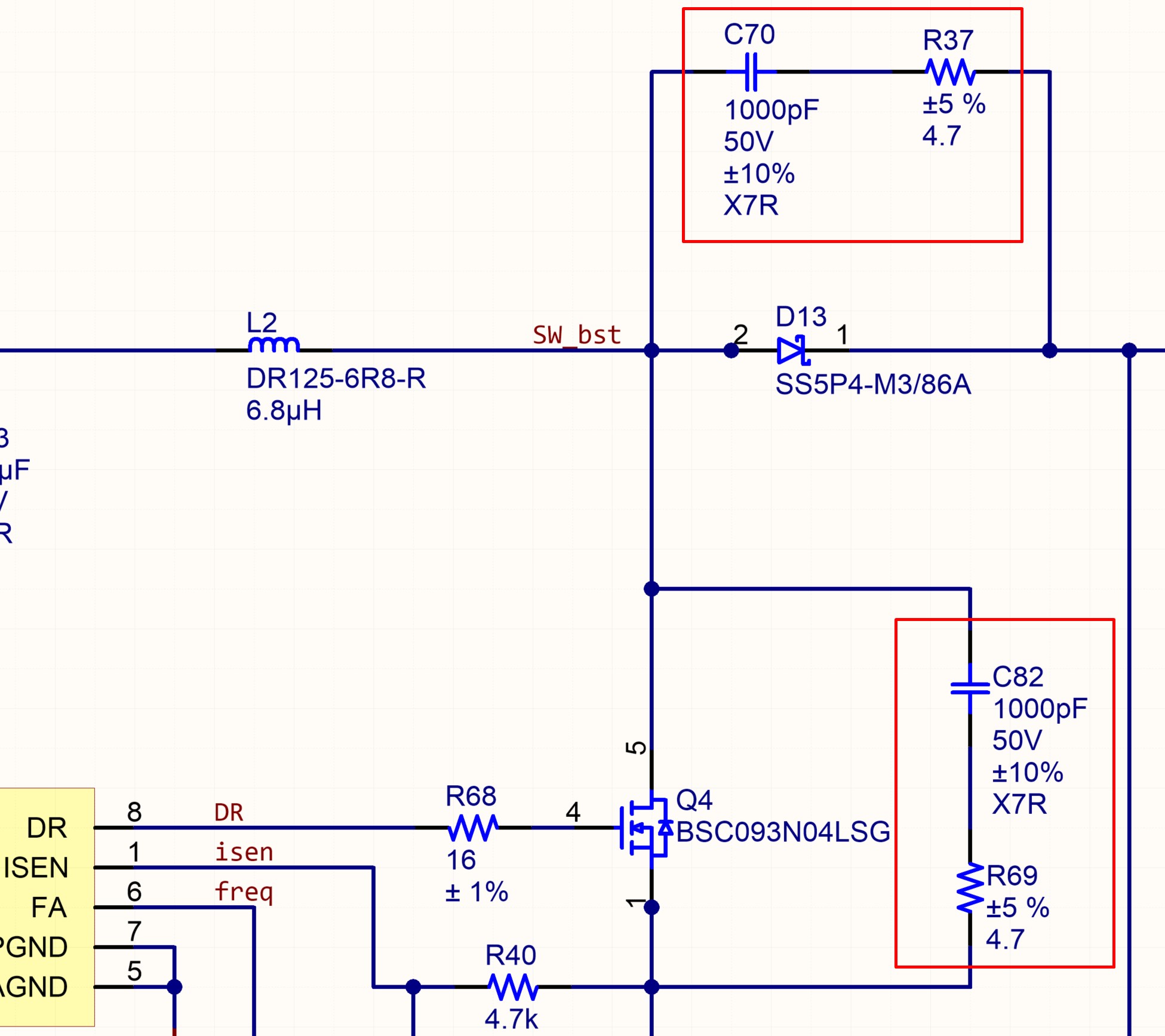Using an RC snubber
Snubbers can protect parts from overvoltage by damping parasitic oscillations
There are a number of different snubber types, but in this post I'll talk about the RC snubber. Hard-switched circuits of the type found in power supplies can generate parasitic oscillations. When current is flowing through a MOSFET or IGBT and the part is switched off, parasitic inductance in the traces and the input capacitance of the switch can cause the collector (drain) voltage to ring. The problem with this is that the ringing voltage may exceed the max Vds or max Vce of the switch. This is where the snubber comes in. The snubber is a series RC circuit connected across the switch. The snubber works by conducting the high di/dt transient created by the switching event through the damping resistor. This lowers the Q of the circuit and damps the ringing.
 Snubbed Switches on a non-Synchronous Boost Converter
Snubbed Switches on a non-Synchronous Boost Converter
The other side of using the snubber is that it dissipates power. The above schematic snippet is a 24V output boost converter switching at 700kHz. The power disspation in R69 and R37 are 1E-9F x (24V)2 x 700,000Hz = 400mW each. Notice the power dissipation in the resistor depends on the capacitance chosen rather than the resistor value. So using snubbers is a tradeoff between damping effectiveness and power dissipation. Generally you want to use as little capacitance as possible to get the job done.
As far as component tuning, there are lots of methods and articles about how to achieve critical damping. In practice, you first decide how much power you afford to dissipate to set the cap size and then tune damping resistor to get the best damping. For most well designed surface mount circuits, the snubber caps are usually under 2.2nF and damping resistors in the single digit ohms. Happy snubbing!
By: Dave
Dave is skilled in circuit design, PCB layout, and EMC - specializing in automotive power electronics hardware design. In addition to 10+ years as an electronics consultant, Dave spent his career in the automotive industry from engineering to upper management. Dave is a registered Professional Engineer (Mechanical). He also holds a MS in Computer Science (Laurence Tech 06') and a BS in Mechanical Engineering (GMI 86').
Like what you see?
Experiments
About Us
DEB Associates helps companies through the entire electronics design process. Our team is smart, reliable, and deeply knowledgeable about the intricacies of circuit design, PCB layout, and EMC.
DEB Associates 2026
